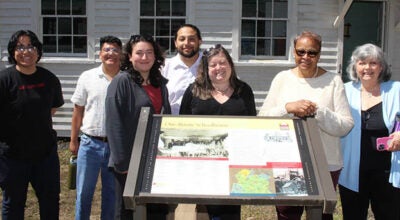The valuation game
Published 7:28 am Thursday, September 6, 2018
A recent post making its rounds on social media was probably supposed to be motivational. I found its conclusions disturbing.
According to the post, a bar of iron had a value of five dollars. It didn’t specify the type of iron, the size of the bar, or its condition, so there’s no way to confirm the truth of this foundational assessment. It then went on to compare the prices of items that could be made with the iron. Horseshoes, it claimed, were worth a little more than double the cost of the iron. It then talked about needles, although I’m not sure whether sewing needles or syringes were intended. The post claimed that these converted the five dollars’ worth of raw iron into something valued in the thousands of dollars. After this, it discussed an intricate component in the mechanism that enables mechanical watches to keep time. Using the iron in this way, the post claimed, increased the material’s value into the hundreds of thousands of dollars. The post concluded, therefore, that a person’s value was based on what that person made of him — or herself.
The post’s creator apparently failed to consider that none of the items into which the raw material could be processed achieved the end results by themselves. All of the examples given were fabricated from various grades of steel, and the manufacturing processes required differed significantly. The horseshoes may have been handcrafted by a blacksmith or a ferrier. The needles, whether for stitching fabric or piercing skin, required complex machinery and multiple production steps. As for watch components, the post’s pricing claims specified balance springs. A balance spring is part of the oscillating unit used to track time in mechanical watches. I did some looking around on the internet to see how these small, delicate components were made. Monochrome, a magazine focused on high-end watches, says the process blends manual craftsmanship with high-tech, precision industrial processes. Making the wire used in crafting the springs takes about two weeks. After that, the wire must be shaped, cut, coiled, heat-treated and pressed.
The logic presented in this social media post inspired me to consider several things, although my own conclusions may be at odds with what the post’s creator expected.
First, I thought about a variety of people I know in various circumstances. I realized that people don’t become who they are by themselves. Each individual possesses a unique set of advantages and disadvantages. People are born into different families, into distinctive situations and into diverse communities. They attend schools with peers who express assorted cultural expectations, and they learn under the guidance of teachers with varying abilities and resources. Life experiences shape people’s aspirations, and opportunity opens and shuts dissimilar sets of doors.
More than this, ascribing a dollar amount as the only arbitrator of value seemed to ignore the requirements of unrelated situations. An equestrian on a mount in need of a shoe would likely not prefer a precisely balanced watch component, despite its greater cost. Similarly, a person who relied on insulin injections would be poorly served by even the most handsomely crafted horseshoe. All of the items mentioned by the post served within specific, non-interchangeable realms of need. People, I have learned, are not interchangeable.
Additionally, I reacted negatively to the idea that people had value only to the extent that their achievements could be totaled on a balance sheet. I found myself reminded of the biblical principal that all people are created by God and in God’s image. I felt challenged to look for the uniqueness of each individual person I encountered, and I discovered that when I looked with more spiritually informed eyes, I admired the strength with which people have faced many challenges.
The social media post I saw had been shared tens of thousands of times and had received hundreds of likes, although happily, it did have a few dissenters. I hope you will join me in saying “no” to the flawed logic that measures us against each other, and that together we can join in a mission to see each person as a unique individual of matchless value.
KAREN BELLENIR has been writing for The Farmville Herald since 2009. Her book, Happy to Be Here: A Transplant Takes Root in Farmville, Virginia features a compilation of her columns. It is available from PierPress.com. You can contact Karen at kbellenir@PierPress.com.




